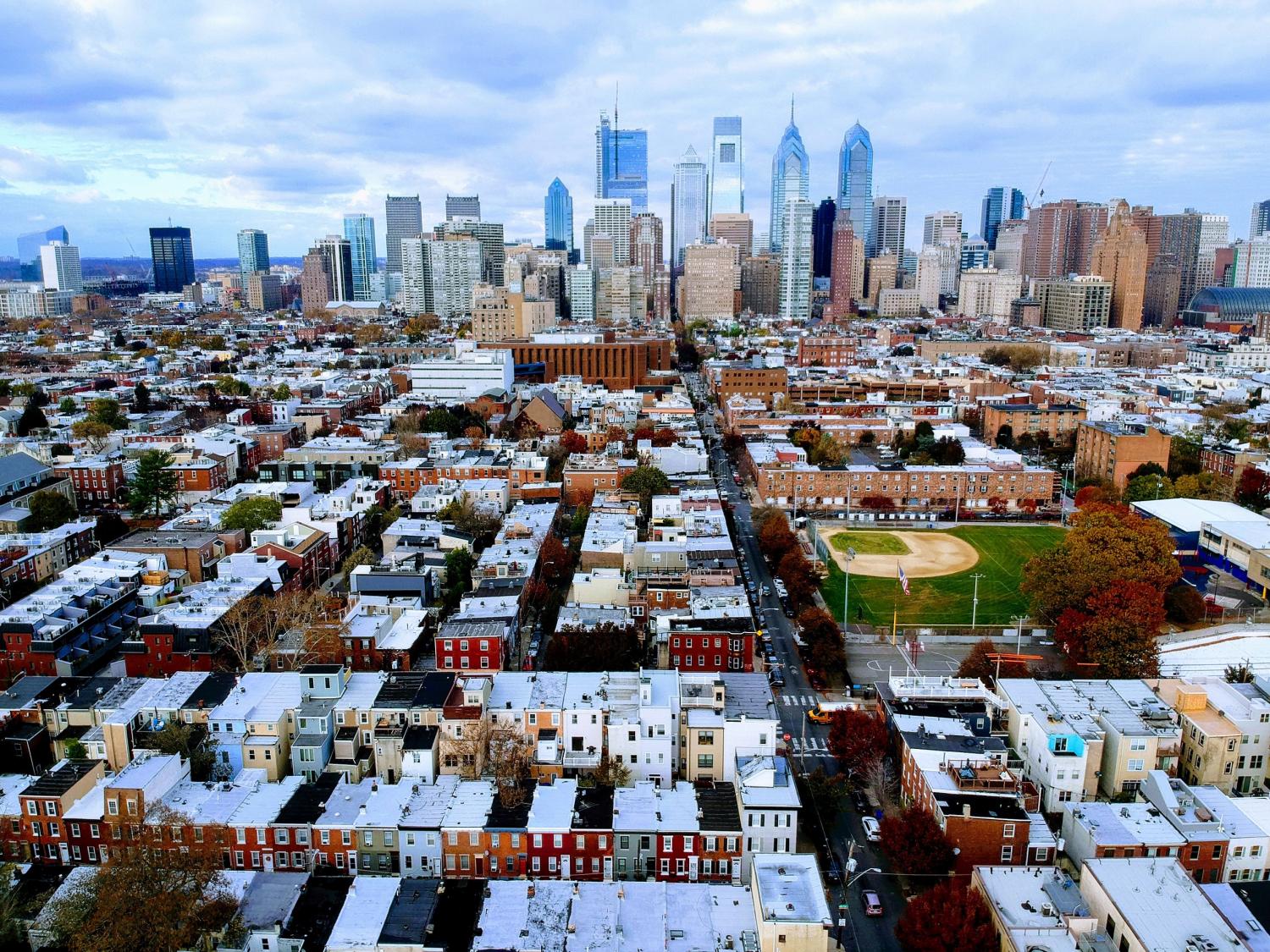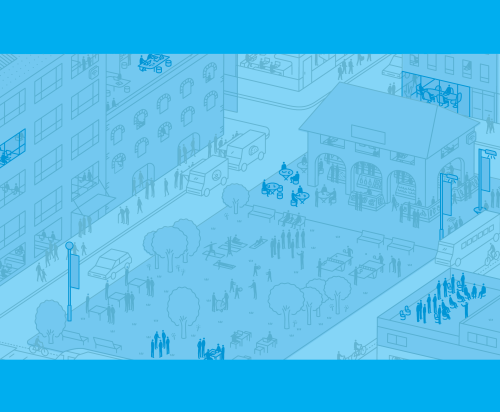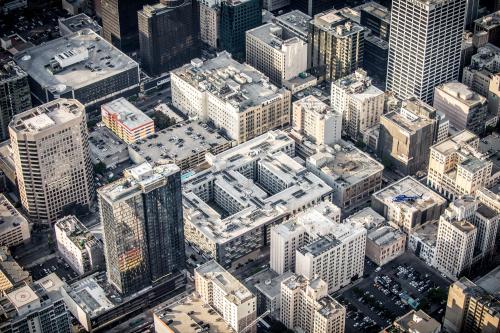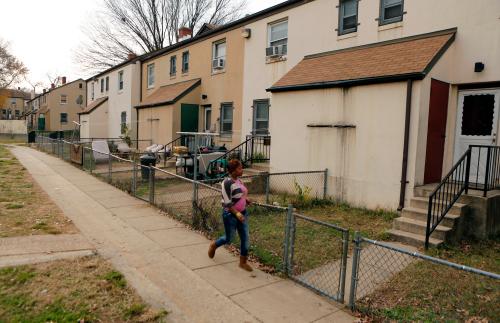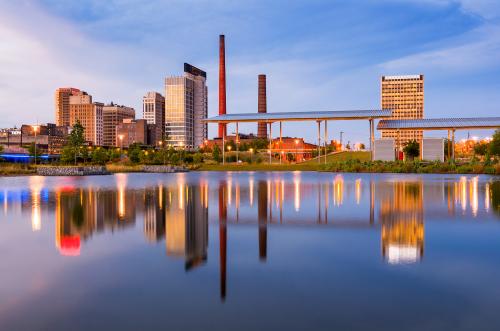The September media headlines were not kind to Pittsburgh. Prompted by a new report on racial and gender disparities in the city, articles such as “Pittsburgh: A ‘Most Livable’ City, but Not for Black Women” began to surface, highlighting a troublesome contradiction.1 By numerous measures, the Steel City is on the rise. But much of its growth and prosperity are concentrating downtown and in a handful of adjacent neighborhoods, while other neighborhoods—home primarily to people of color and high-poverty households—have yet to feel the lift.2
This story is hardly unique to Pittsburgh. After decades of sprawl and suburban dominance, many U.S. cities are experiencing rebounding populations, growing employment, and new public and private sector investments in both people and places. Yet many communities are being left out of the revival.3 Throughout the country, the challenges wrought by our widening geographic inequities—characterized by stark income, wealth, and race-based disparities across neighborhoods, cities, and regions—are becoming even more apparent, thrusting “place” to the forefront of many economic policy conversations.4
One year ago this month, Brookings Metro dove into this fray with the establishment of the Bass Center for Transformative Placemaking. The impetus stemmed from the recognition that market disruptions, coupled with changing demographic and household structures, are sharpening the nation’s long-standing spatial divides—and that new sets of place-led policies and practices are essential to bridging them.
The patterns of concentration, dispersion, and racial and economic segregation that characterize the American landscape are not new, nor are they static. Across the country, research by our Brookings colleague Mark Muro and others has shown that large, coastal metro areas such as Seattle, San Francisco, and New York City are capturing a disproportionate share of today’s digital-economy growth, while small and midsized cities and rural areas fall behind.5 Within metro areas, poverty and racial isolation remain persistent in historically distressed and disinvested urban neighborhoods, even as many downtowns, waterfronts, and innovation districts are undergoing significant revitalization and reinvestment.6 Meanwhile, many suburban communities are grappling with aging infrastructure and rising numbers of poor residents, amid auto-centric designs that lack the walkability and connectivity demanded by the businesses needed to serve them.7
Residents and workers in these areas understand that in today’s economy, opportunity is increasingly dictated by geography—and they’re putting pressure on federal, state, and local leaders to take action.8Yet lingering tensions remain, rooted in deep-seated fears about neighborhood change and the lack of community voice in the process.9 People want to see their communities improve, but those who have long been excluded from growth and investment are rightfully wary about who decides the meaning of “improvement,” and who will reap the gains. In short, how can residents trust that the benefits of investment will finally reach them?10
We launched the Bass Center a year ago with the aim of inspiring public, private, and civic leaders to respond to this question—that is, to work deeply with communities to make the kinds of investments in place that will generate widespread social and economic benefits. Twelve months and a lot of listening later, we’ve developed an outcome-oriented framework that defines transformative placemaking as a new form of integrated practice for getting there. The framework—meant to be adapted and refined to reflect community priorities and realities—is designed to provide stakeholders in urban, suburban, and rural areas with a holistic template for creating connected, vibrant, and inclusive communities.
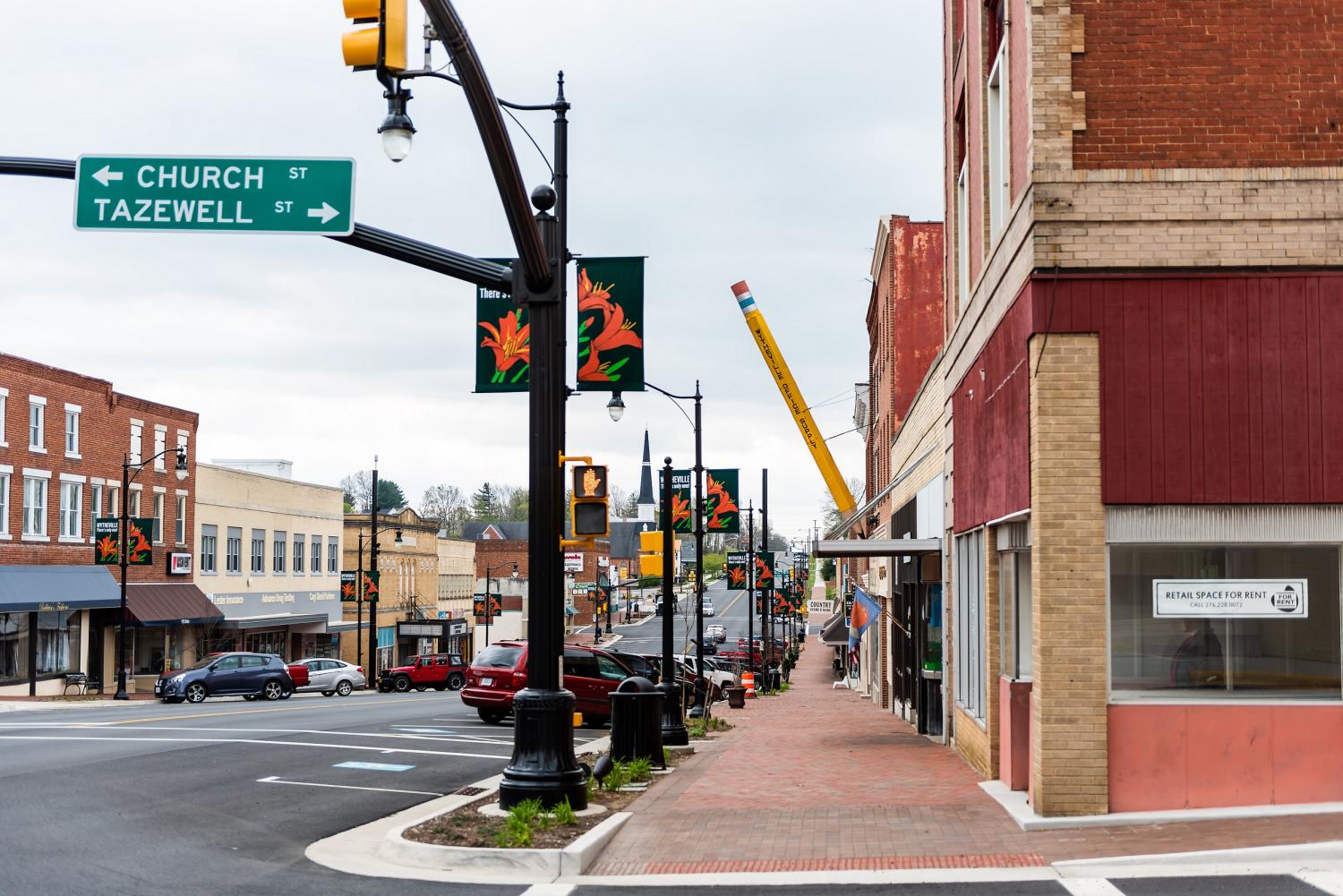
What sets transformative placemaking apart?
Over the past several decades, planners, community development groups, and other place-focused organizations have elevated the importance of place and placemaking in fostering more inclusive development. However, for all their successes, those efforts are constrained by dated structures that fail to keep pace with the changing needs of businesses, institutions, residents, and workers in regards to place—and are thus unable to substantively turn the tide on the nation’s unequal growth patterns. For example, for all of the evidence showing the benefits of proximity and density, many of our policies and investments still largely support decentralized development—and the auto-dependency, environmental degradation, and fiscal waste that come with it. Further, when public and private sector leaders do prioritize place-based investments, they often focus on either mitigating the symptoms of entrenched poverty or catering to the perceived demands of well-off workers and residents. In neither case is more equitable and inclusive economic growth the main objective.
So, what makes transformative placemaking different? And what distinguishes it from “creative placemaking,” “tactical placemaking,” and other efforts with a seemingly similar ambition? The answer can be boiled down to three distinct qualities that set transformative placemaking apart: its scope, scale, and level of integration.
- Scope: Transformative placemaking is more expansive than traditional placemaking in that it strives to create destinations for work, commerce, recreation, and residential life that generate economic value for the broader city and region. To this end, it prioritizes place-based investments that support creativity and entrepreneurship, access and resiliency, sociability and community identity, and robust civic structures—not only in high-amenity, highly resourced areas, but in those that have long been overlooked and undervalued by both the private and public sectors. In short, transformative placemaking aims not only to reinvigorate (and in many cases, repair) our public realm, but to remake the relationship between place and economy in ways that generate broad-based and locally led prosperity.
- Scale: The scope of transformative placemaking demands a geographic scale larger than a block or public space. It instead centers on specific subareas of cities or regions where economic and/or infrastructure assets cluster and connect—but where the reach and impact of those assets are limited by varying place-based challenges. This scale can be exemplified by a rising tech hub facing affordability pressures; an abandoned commercial corridor still suffering from the legacy of urban renewal; a rural main street struggling against economic decline; or an auto-centric suburban business park fighting to remain relevant as the place demands of firms and workers shift. The locus for transformative placemaking need not be defined by a rigid, predetermined geographic boundary, but by a place’s specific attributes, market realities, and opportunities.
- Integration: Finally, given these aspirations, transformative placemaking requires an integrated approach, one which breaks down the siloes between economic development, community development, transportation, healthcare, and other fields to advance local growth and development through a set of holistic, interconnected strategies. In practice, this means bringing together actors from varied disciplines—including those that might not consider their work explicitly “place-based”—to advance a shared, goal-oriented community vision. When implemented in tandem, their efforts—from nurturing local talent, to creating mixed-use physical spaces, to promoting social interaction, to strengthening community networks—can have the most impactful outcomes.
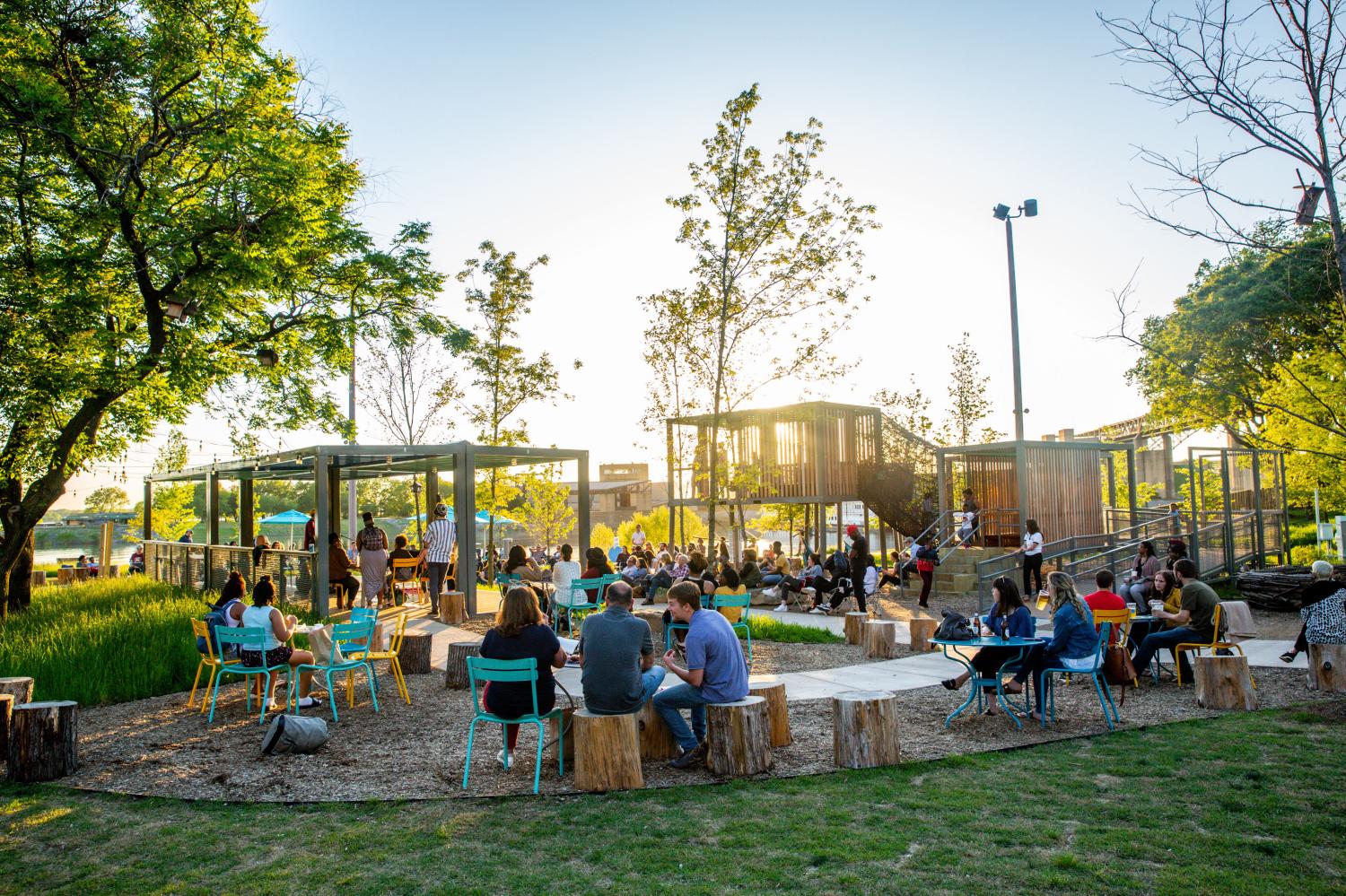
What does transformative placemaking aim to achieve?
When Brookings Metro established the Bass Center last year, we put forth a case for why the Center was needed—that is, the major challenges it would address and the gaps in knowledge and practice that it would work with the broader field to fill. But we needed more time to define what success might look like on the ground—in other words, what locally deployed transformative placemaking should aspire to achieve. To this end, and with significant input from several other individuals and organizations, the Bass Center has developed a four-part, holistic framework that defines the practice and lays out a broad set of outcomes against which local efforts might be gauged.11 (Download the transformative placemaking framework.)
Transformative placemaking aims to:
- Nurture an economic ecosystem that is regionally connected, innovative, and rooted in the assets of its local residents and businesses. A dynamic economic ecosystem is essential to enabling households to build wealth and ensuring local governments sustain the tax base needed to function. Yet the business, institutional, and human capital assets of many communities remain largely unrecognized, untapped, and disconnected from the larger regional ecosystem, impeding economic growth and development. Local residents, for example, may be excluded from the training, skills, or networks needed to take advantage of employment opportunities near their neighborhoods or in their broader city or region. Likewise, local entrepreneurs may lack the market information, access to capital, or other supports they need to launch or expand their businesses, or the connections to larger regional markets and supply chains that could help them grow. Transformative placemaking recognizes that physical solutions alone cannot address these economic ecosystem challenges. Instead, it marshals programs and investments in specific places to spur the creativity, talent development, and entrepreneurship needed to excel in today’s rapidly shifting economy.
For example, in Wytheville, Va.—a small, rural community facing industry decline and a diminishing population—public and private sector leaders are coming together to support local entrepreneurship by providing small downtown businesses with access to capital, free business classes, and mentorship and networking opportunities. Combined with investments in street improvements and new amenities, the town is taking an integrated approach rooted in its homegrown assets to catalyze revitalization.
- Support a built environment that is accessible, flexible, and advances community health and resiliency. A dynamic economic and social environment demands a functional, well-maintained built environment. Yet many urban, suburban, and rural areas alike have auto-centric design patterns that impede walking, biking, and other forms of mobility, and limit the effectiveness of public transportation systems to get people where they need to be. They may suffer from aging or obsolete infrastructure that has functionally lost its purpose, or from legacy design patterns (wide streets, large surface parking lots, blank building faces) that threaten safety and stifle human interaction and sociability. And these places may lack access to quality physical amenities such as parks and green spaces, or worse, may suffer from environmental contamination or climate-change-related challenges. Transformative placemaking aims to address these issues by facilitating connectivity, providing a mix of spaces for businesses to launch and grow, nurturing community engagement, and enhancing the health and well-being of both people and the natural environment.
For example, as part of its larger riverfront revitalization strategy, the Memphis River Parks Partnership is increasing connectivity between disadvantaged neighborhoods to the north, south, and east of downtown by defining pedestrian and cycling corridors between the riverfront and surrounding neighborhoods and using a long-overlooked park as an anchor for new neighborhood investment. Combined with efforts to nurture long-term skill development, support women- and minority-owned businesses, and promote unity among diverse neighbors, they are using the riverfront to bring social and economic gains to all Memphians.
- Foster a vibrant, cohesive social environment that is reflective of community history and identity. The economic dynamism and physical characteristics of a place go hand in hand with an inclusive, lively, and cohesive social environment. But in an age of constrained resources and increasing social divides, many leaders undervalue the importance of amenities, programming, and resources in fostering such an atmosphere. Public spaces and walkable streets—along with concerts, street fairs, and other community events—encourage mixing among diverse groups. Absent such activities and a public realm that enables them, people have little opportunity to engage and build trust with those outside their immediate family or social circles. Moreover, if investments fail to value the distinct cultural identity and history of a community, disregard the different ways people might experience place based on their race, gender, or community tenure, or prioritize the desires of well-off newcomers over existing residents, new or revitalized places may feel exclusive to some groups over others. Transformative placemaking supports planning processes, programming, and investments that value inclusion and equity at their core.12
For example, in Philadelphia’s University City District, a local partnership of anchor institutions, small businesses, and residents are coming together to not only fund quality public spaces and programming, but to ensure they are deeply inclusive. Through the Just Spaces Initiative, UCD stakeholders are using a web-based tool to track who utilizes the public space they manage, offering more diverse and culturally relevant programs and events, and implementing historic signage programs to highlight the role of notable women, people of color, and members of the LGBTQ community.
- Encourage civic structures that are locally organized, inclusive, and support network building. Civic infrastructure—or the organizations and institutions that help people connect with one another, address shared concerns, and solve public problems—forms the backbone of a healthy community.13 Still, traditional place-based economic revitalization efforts—while bringing essential resources, investment, and physical improvements to communities—haven’t always dedicated concomitant energy to strengthening and sustaining the localized governance structures needed to carry out a shared community vision over time.14 When efforts are made to strengthen local place governance, they may suffer from funding and legal structures that prioritize business needs over residents, or fail to meaningfully engage diverse community perspectives. Transformative placemaking supports, and is supported by, formal and informal locally organized structures and networks that are representative of a community’s diverse voices, outcome-oriented, and sustained by funding, expertise, and partnerships.
For example, in Washington, D.C., Building Bridges Across the River is encouraging locally managed civic infrastructure by finding creative ways to engage community members, municipal leaders, and nonprofits throughout every step of their effort to develop the city’s first elevated public park. It offers Community Leadership Empowerment Workshops to teach residents how to effectively organize and lead meaningful change, provides resources for residents and others to create inclusive, community-driven plans of their own, and is continually adapting its Equitable Development Plan to meet residents’ changing needs.
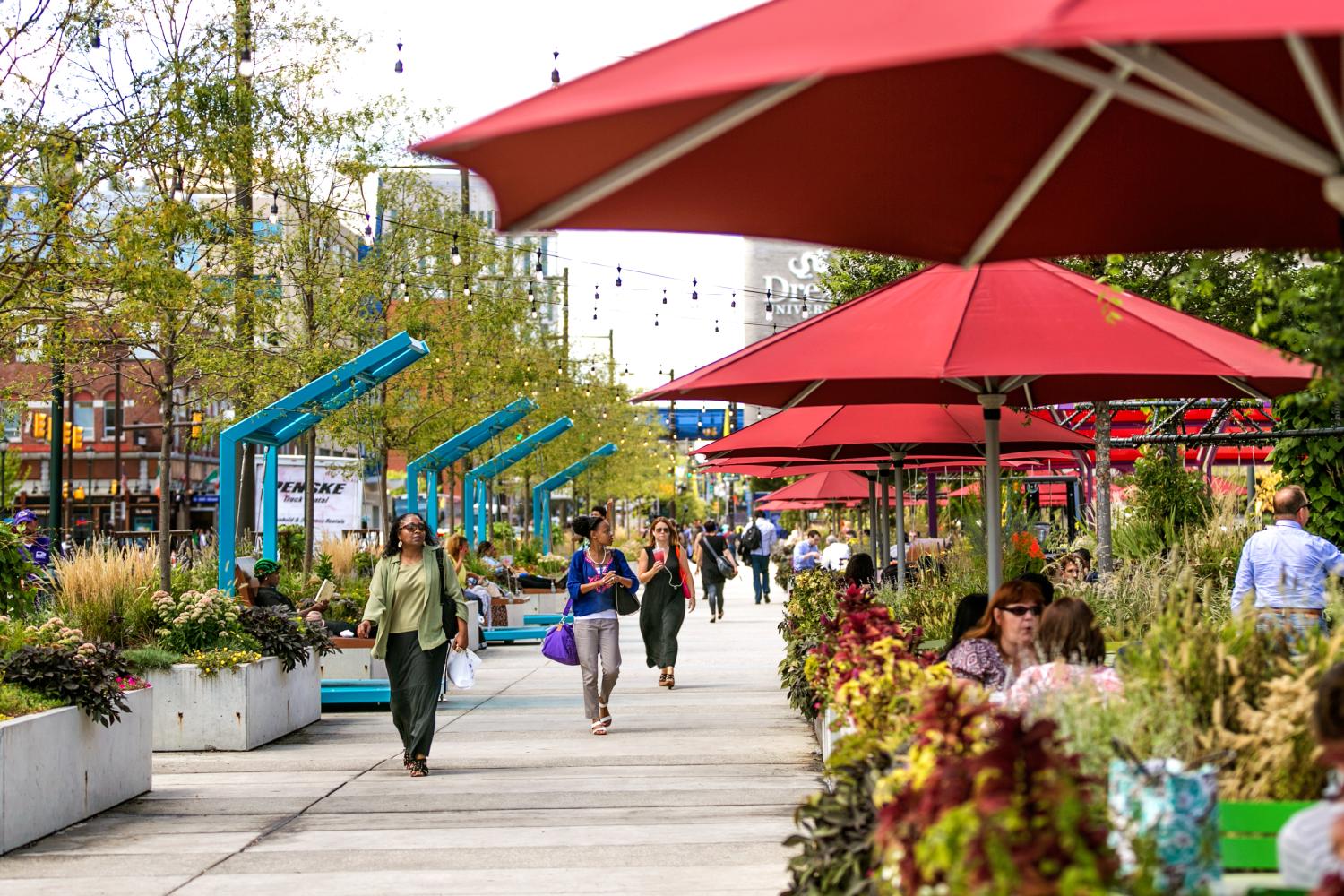
Putting transformative placemaking into practice
This framework is designed to be relevant to any community aspiring to pursue large-scale development or redevelopment that promotes widespread economic and social benefits. It is neither prescriptive nor static, recognizing that the specific strategies to achieve transformative placemaking’s objectives—in whole or in part—must be tailored to the distinct needs of places and populations, and constantly evolve in response to new market forces, trends, and opportunities.
In practice, this framework can serve as a template for public, private, and civic sector leaders to guide program development, policy reform, and resource allocation decisions, to set impact goals and metrics for assessing them, and to measure progress over time. It encourages them to establish a more holistic vision for what a place can become, and to understand the role that intersecting transformative placemaking efforts—locally designed and advanced—can play in achieving that vision.
At the end of the day, this framework is about creating livable places for everyone, not just those at the top of the ladder. It encourages places like Pittsburgh, and other cities and towns facing place-based inequities, to take a hard look at who has benefited from investment in the past, who is benefiting now, and how leaders can partner with communities to ensure that more people benefit in the future.
-
Footnotes
- Howell, Junia, Sara Goodkind, Leah A Jacobs, Dominique Branson, and Liz Miller. (2019). Pittsburgh’s inequality across gender and race. City of Pittsburgh’s Gender Equity Commission. Retrieved from https://apps.pittsburghpa.gov/redtail/images/7109_Pittsburgh’s_Inequality_Across_Gender_and_Race_09_18_19.pdf; Mock, Brentin. (2019). Pittsburgh: A ‘most livable’ city, but not for black women. CityLab. Retrieved from https://www.citylab.com/equity/2019/09/black-women-pittsburgh-mortality-poverty-racism-jobs-police/598291/
- Anzilotti, Eillie. (2018). American cities are reviving – but leaving the poor behind. Fast Company. Retrieved from https://www.fastcompany.com/40586985/american-cities-are-reviving-but-leaving-the-poor-behind; Cotter, Nick. (2019). Disparities between Pittsburgh neighborhoods persist. This project tries to understand why. PublicSource. Retrieved from: https://www.publicsource.org/disparities-between-pittsburgh-neighborhoods-persist-this-project-tries-to-understand-why/.
- Condon, Tom. (2019). Reviving cities must include the excluded. The CT Mirror. Retrieved from https://ctmirror.org/2019/09/19/reviving-cities-must-include-the-excluded/.
- Florida, Richard. (2019). Don’t move people out of distressed places. Instead, revitalize them. CityLab. Retrieved from https://www.citylab.com/life/2019/09/distressed-cities-place-based-policy-jobs-economic-growth/597919/ ; Berube, Alan. (2019). Policy to help people and help places is not a zero-sum game. Brookings Institution. Retrieved from https://www.brookings.edu/research/policy-to-help-people-and-help-places-is-not-a-zero-sum-game/.
- Muro, Mark and Jacob Whiton. (2018). Geographic gaps are widening while U.S. economic growth increases. The Avenue, Brookings Institution. See also, Economic Innovation Group, “2018 Distressed Communities Index” available at https://eig.org/dci; Florida, Richard. (2017). Why America’s richest cities keep getting richer. The Atlantic. Retrieved from https://www.theatlantic.com/business/archive/2017/04/richard-florida-winner-take-all-new-urban-crisis/522630/.
- Poon, Linda. (2015). Mapping where the poor are getting poorer in American cities. CityLab. Retrieved from https://www.citylab.com/equity/2015/08/mapping-where-the-poor-are-getting-poorer-in-american-cities/401219/.
- Institute on Metropolitan Opportunity, University of Minnesota Law School. (2019). American neighborhood change in the 21st century. Retrieved from https://www.law.umn.edu/sites/law.umn.edu/files/metro-files/american_neighborhood_change_in_the_21st_century_-_full_report_-_4-1-2019.pdf.
- Eligon, John and Mitch Smith. (2019). As downtowns prosper, voters ask mayors: What about my neighborhood? The New York Times. Retrieved from https://www.nytimes.com/2019/06/16/us/kansas-city-downtown-mayor-election.html.
- Danley, Stephen and Rasheda Weaver. (2018). “They’re not building it for us”: Displacement pressure, unwelcomeness, and protesting neighborhood investment. Societies 2018, 8(3), 74; https://doi.org/10.3390/soc8030074
- Vey, Jennifer S. (2019). How placemaking can empower urban communities, not tear them apart. The Avenue, Brookings Institution. Retrieved from https://www.brookings.edu/blog/the-avenue/2019/01/16/how-placemaking-can-empower-urban-communities-not-tear-them-apart/.
- We would like to thank Project for Public Spaces and the Main Street America for their thought leadership on the framework, as well as LISC, the Bass Center Advisory Committee, and our colleagues at Brookings for providing valuable feedback.
- Koh, Annette (2017). Placemaking when Black lives matter. Project for Public Spaces. Retrieved from https://www.pps.org/article/placemaking-black-lives-matter
- Blair, Jill. 21st Century civic infrastructure: We must build it so all can come. Informing Change. Retrieved from http://informingchange.com/21st-century-civic-infrastructure-2/.
- Shroyer, Aaron, Joseph Schilling, and Erika Poethig. (2019). Catalyzing neighborhood revitalization by strengthening civic infrastructure: Principles for place-based initiatives. The Urban Institute. Retrieved from https://www.urban.org/sites/default/files/publication/100033/catalyzing_neighborhood_revitalization_by_strengthening_civic_infrastructure_1.pdf.


